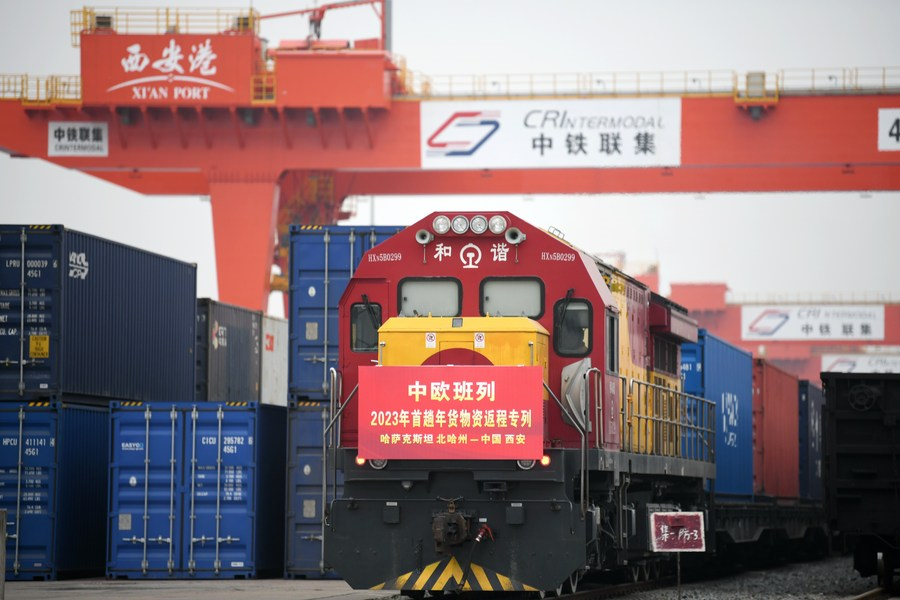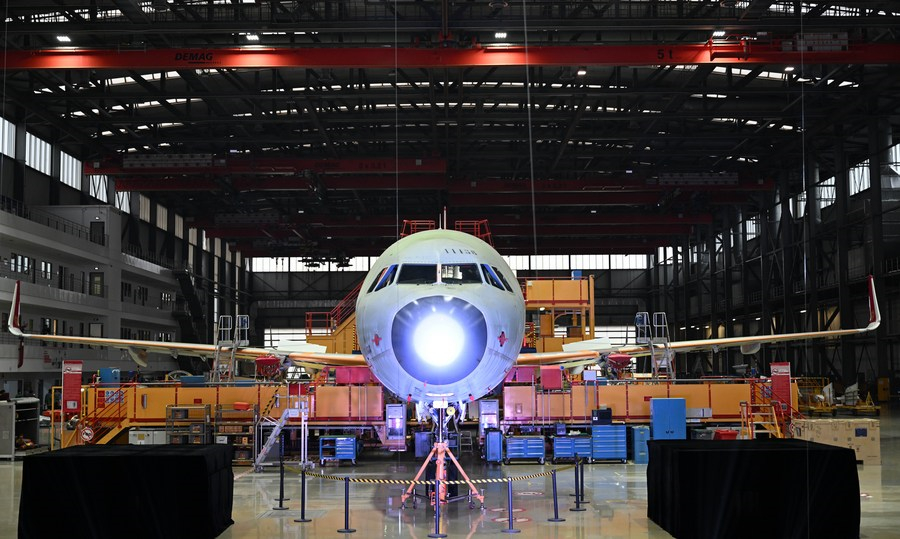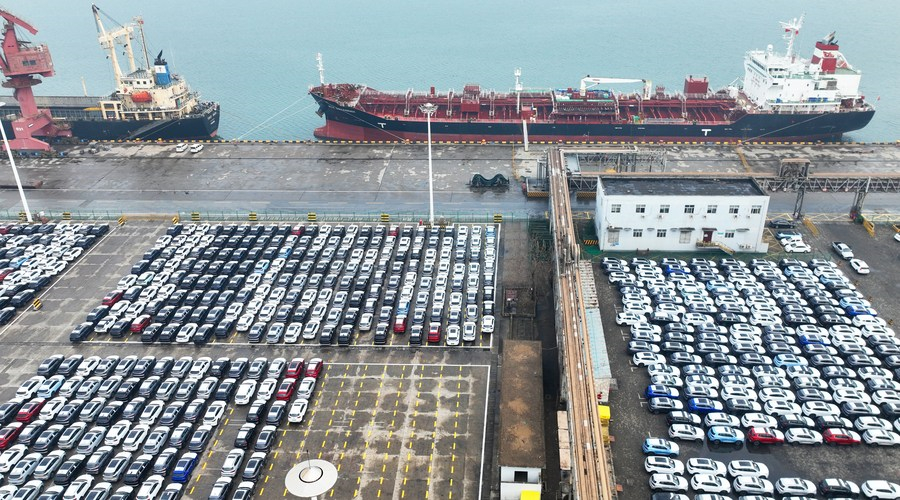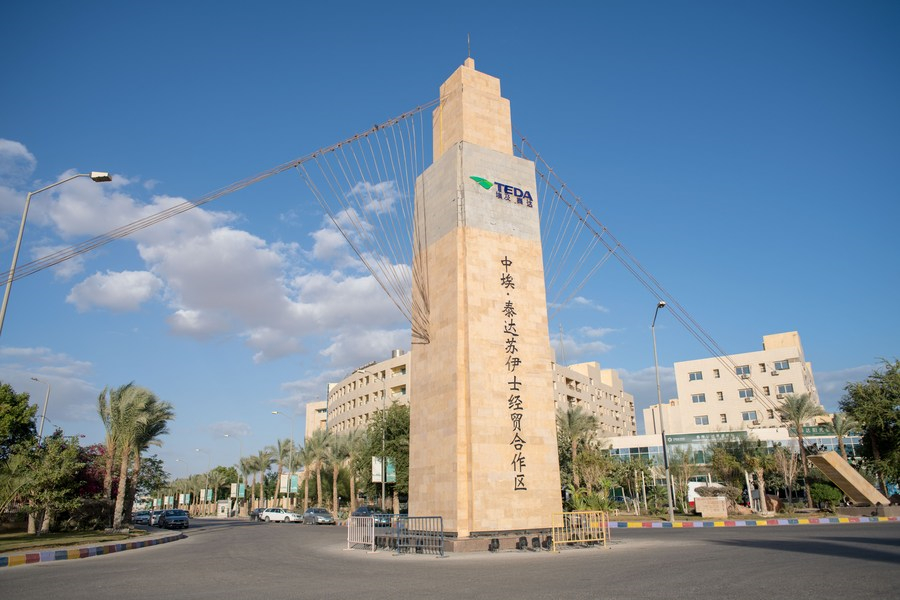China's economic recovery renews impetus for global growth
* China's devotion to advancing opening up has reinforced its appeal for foreign companies and investors amid flagging global economic recovery and headwinds of protectionism.
* Last year, foreign direct investment in the Chinese mainland, in actual use, expanded 6.3 percent year-on-year to 1.23 trillion yuan (about 178 billion dollars).
* Ahead of the "two sessions," in a global survey Xinhua conducted on the development of China, more than 95 percent of the respondents agree that China made impressive achievements in the past decade.
BEIJING -- A string of positive signals is coming out China's ongoing "two sessions" -- an economic growth target of around 5 percent for 2023 and reaffirmed commitment to high-level opening up. These have boosted the global business community's confidence in China's continued contribution to the world economic recovery and stability.
When attending a deliberation on Monday at the first session of the 14th National People's Congress, Chinese President Xi Jinping pledged efforts to meet the requirements of building a high-standard socialist market economy and promoting high-standard opening up.

A Fuxing bullet train runs on the China's section of the China-Laos Railway on Jan. 27, 2023. [Photo by Xu Zhangwei/Xinhua]
ANCHOR FOR GLOBAL ECONOMIC STABILITY
China's devotion to advancing opening up has reinforced its appeal for foreign companies and investors amid flagging global economic recovery and headwinds of protectionism.
Looking back to the past five years, China has made major achievements in economic and social development, with its GDP growing to 121 trillion yuan (17.5 trillion U.S. dollars) at an average annual rate of 5.2 percent, according to the government work report delivered at the opening meeting of the session on Sunday.
As China steadily pushes forward economic recovery to promote high-quality development, the agenda for 2023 is set to be dominated by one topic in particular: growth.
These days, global financial banks have raised their forecast for the world's second-largest economy in unison. The International Monetary Fund (IMF) has lifted its projection for China's economic growth in 2023 to 5.2 percent. Morgan Stanley, Goldman Sachs and other investment banks have also revised upward their forecasts.
"The rebound in China will be a net positive for the economy; the growth effect should dominate," Thomas Helbling, deputy director of the IMF's Asia and Pacific Department, told a February press briefing.
Among the major driving factors for China's social and economic development, sci-tech innovation has a paramount role.

A China-Europe freight train loaded with 1,300 tonnes of flour from Kazakhstan arrives at Xi'an International Port in Xi'an, northwest China's Shaanxi Province, Jan. 13, 2023. [Xinhua/Li Yibo]
In 2022, China's total expenditure on research and development (R&D) amounted to 3.1 trillion yuan (450 billion dollars), up 10.4 percent year-on-year, maintaining a double-digit growth for seven consecutive years.
George Barcelon, president of the Philippine Chamber of Commerce and Industry, noted China has been making headway in strengthening technological innovation, nurturing new drivers, actively solving stranglehold technical problems, and improving the core competitiveness of the manufacturing industry.
"Substantial R&D input on innovation and high technology is critical to moving up the value chain," Barcelon told Xinhua.
Given China's importance for the global industrial chain and value chain, its steady growth will play an irreplaceable part in the stability and growth of the world economy, especially in the post-pandemic recovery, Jorge Marchini, an economics professor at Argentina's University of Buenos Aires, told Xinhua.
SOURCE OF GROWTH OPPORTUNITIES
"I encourage our business people to go to China, to do business in China," said Marin Orriols, international area director of the Barcelona Chamber of Commerce. "That's worth it."
Ivan Marambio, president of the Chilean Fruit Exporters Association, shares a similar feeling, saying, "the Chinese market is so important for us!" After he led a delegation to several Chinese cities to meet business partners in early January, Chilean cherry exports to China hit a new high during the 2022-23 cherry season, according to his association.
"We are optimistic about the resilience and consumption vitality of the Chinese market and hope to achieve greater development through the Chinese market," Marambio said.
Also at Monday's deliberation, Xi reiterated the commitment to deepen reform in key areas, make coordinated efforts to put in place a modern infrastructure system and a high-standard market system, and steadily expand institutional opening up.
Given these commitments, the world business community eyes fresh opportunities originating from the country's high-quality development and high-level opening up.

This photo taken on Nov. 9, 2022 shows the first Airbus A321 aircraft produced at the Final Assembly Line Asia (FALA) facility in north China's Tianjin. [Xinhua/Zhao Zishuo]
China has long been a strong magnet for foreign investment and trade. Last year, foreign direct investment in the Chinese mainland, in actual use, expanded 6.3 percent year-on-year to 1.23 trillion yuan (about 178 billion dollars), the Ministry of Commerce said in January.
In addition, China's annual foreign trade value hit a record high in 2022, as total goods trade reached 42.07 trillion yuan (6.2 trillion dollars), up 7.7 percent year-on-year, according to China's General Administration of Customs.
For Yu Feng, president of Honeywell China, China's commitment to opening up has injected impetus into the long-term development of foreign companies in the country, including Honeywell.
In 2022, the multinational company deepened cooperation with its Chinese partners in areas such as energy transition, air transportation, intelligent building, and intelligent manufacturing.
"We are confident in the Chinese market's high-quality development and Honeywell's sustained growth in China because of China's comprehensive advantages, which include complete industrial systems, ultra-large market scale, an increasingly optimized business environment, and long-term positive economic fundamentals," Yu said.
ROAD TOWARD WIN-WIN DEVELOPMENT
Ahead of the "two sessions," in a global survey Xinhua conducted on the development of China, more than 95 percent of the respondents agree that China made impressive achievements in the past decade.
The survey found almost 60 percent of the respondents are most impressed by the country's economic development and progress in science and technology.

This aerial photo shows vehicles to be exported at a port in Lianyungang, east China's Jiangsu Province, Jan. 13, 2023. [Photo by Geng Yuhe/Xinhua]
Besides, development potentials and cooperation chances top the list of the answers to the question -- what the Belt and Road Initiative (BRI) has brought to their country and region.
In the eyes of Amadou Diop, a Senegalese expert on China, China's modernization and high-quality development offers not only an inspiration but also "a great opportunity for the rest of the world to commit together towards a community of shared future and common prosperity."
"It does not just say it; it materializes it through factual and very important initiatives and programs," he said of the BRI proposed by Xi in 2013.
Over the past decade, China has been sharing its development dividends with other countries by helping enhance the connectivity and accessibility of infrastructure.
From such transport projects as the China-Laos Railway and the Phnom Penh-Sihanoukville Expressway that galvanize local and regional development to industrial projects such as the China-Egypt TEDA Suez Economic and Trade Cooperation Zone that have attracted numerous enterprises and investment, the BRI has become a high-quality public good jointly built by all partners, with its benefits shared by the world.

This photo taken on Jan. 14, 2021 shows a view of the China-Egypt TEDA Suez Economic and Trade Cooperation Zone in Ain Sokhna, Egypt. [Xinhua/Wu Huiwo]
With the participation of over three-fourths of countries in the world and 32 international organizations, the initiative has brought nearly 1 trillion dollars of investment, established over 3,000 cooperation projects, created some 420,000 jobs in countries along the routes and helped lift nearly 40 million people out of poverty, Chinese Foreign Minister Qin Gang told a press conference on Tuesday.
Cavince Adhere, a Kenyan international relations scholar, lauded China for its willingness to share its resources, technologies and expertise to help transform Africa's economies through enhanced connectivity, trade and job creation.
Belt and Road cooperation projects in Kenya like the Mombasa-Nairobi Standard Gauge Railway, seaports and roads have injected vitality into East Africa's largest economy, Adhere observed.
"China runs the development process according to the belief that if development takes place in the world and welfare rates rise, conflicts and disputes in the world will decrease, leading to security and political stability," Egyptian economist Waleed Gaballah told Xinhua.
That "will boost growth and development rates worldwide and achieve the well-being of peoples and societies," he opined.
Video reporters: You Zhixin, Sun Qing, Lu Haiyue, Yao Bing, Yu Fuqing, Yang Yiran, Wang Huan, Ali Jaswal, Tariq Hameed; video editors: Zhang Qiru, Zhang Yuhong, Hong Yan
























